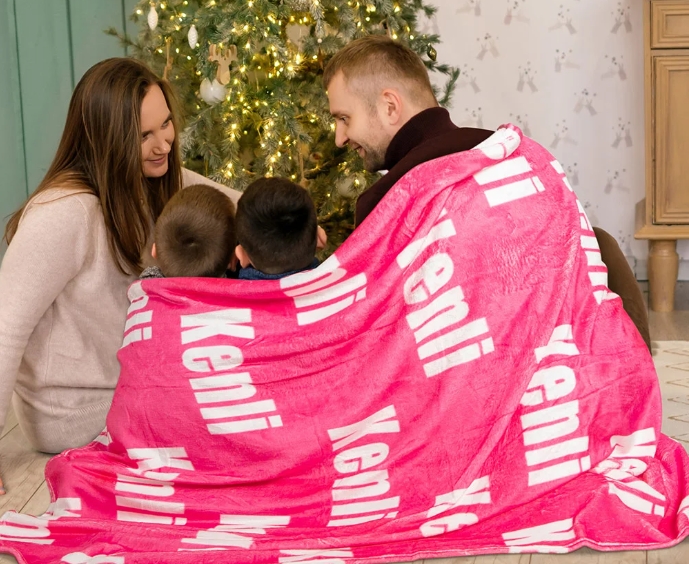Choosing a quality blanket may look easy, but it’s not. It requires a lot of consideration amongst many choices according to color, size, material, and more. You should endeavor to make the right choice because a blanket is something you’ll have around your house for a long time. Pick a blanket that will maximize your comfort while keeping you warm.
Various blankets are available that may confuse because of the advertising and other marketing strategies the manufacturer usually uses. These are sometimes not true.
In this article, we will give you great tips and guidelines on picking the perfect blankets for your house that will make it a home.
Things To Consider When Choosing A Quality Blanket
1. Material
You should consider the best material for you and those who will use that blanket. Some people have skin allergies to certain materials, especially the ones that aren’t directly naturally sourced, such as acrylics. This is also why picking natural materials such as cotton or wool for a blanket is safer.
Some materials are also warmer than others, so if you’re looking for a light blanket on your couch or a heavy blanket to use in your bed, consider the material used to make it.
2. Age
Newborns have very sensitive skin, so a rough blanket will harm them easily. They will also need a blanket made of natural material to prevent an outbreak of any unknown skin allergies or irritation.
The same goes for elderly people because their skin is also susceptible to harm. Go for velvety smooth blankets for these two age groups to keep them healthy and comfortable.
3. Color
The blanket’s color is the most obvious factor for consideration, but it goes deeper than just choosing your favorite color. Consider the color scheme of the room where you’ll use the blanket. Make sure it matches or coordinates to keep the decor as desired.
Patterns or drawings on the blanket matter, too, because they can make or break your room’s color flow. So, consider your room back home as you pick your favorite color.
4. Texture
Blankets made from luxury materials such as velvet are expensive, but they have a smooth, perfect texture suitable for all ages and skin types. Other people will prefer blankets that are not as smooth as velvet but are still comfortable.
There are available blanket covers in the market where you can insert your blanket and fasten it into the cover to prevent it from getting dirty, get better decor from the blanket cover design instead of the blanket, and break the monotony of seeing only one appearance of the blanket.
If you already have a blanket with one texture and want another without getting another blanket, pick a blanket cover with a different texture of your choice.
5. Ease of laundering
Some blankets, such as white-colored blankets or ones made from artificial material, will make stains more visible quickly. The ones made from artificial material tend to gain static electricity easily and attract dust particles, making them dirty quickly. Pick a blanket that will be easy to care for because blankets aren’t washed as often.
For babies and aged people, their blankets will often be washed, so as you buy the blanket, look at its heaviness, whether its color is fast, and if it easily stains. Pick a blanket that will make laundering it stress-free.
6. Size
There are various blanket sizes, such as:
- Twin size, 66 x 90 inches, can cover up to a single person.
- Full/Queen-sized blankets that are 90 x 90 inches and can cover around three average-sized people.
- King-sized blankets are 108 x 90 inches suitable for a king-size bed or as a blanket for about 5 people.
- Oversized blankets that are 120 x 120 inches or larger. They are very large and perfect for very large beds and can cover multiple people.
Always pick the perfectly sized blanket for your bed so that you remain sufficiently warm and comfortable in your sleep. For sofas, a small blanket will do. Also, note that the huge blankets will require adequate storage for them and colors that don’t stain easily as laundering them often will get tedious.
7. Price
Different blankets are usually priced differently according to their size, material, and manufacturing craftsmanship. However, even as you choose something in your budget, always look at the quality so that you avoid going back to buy a blanket occasionally.
8. Personalization
If you want to make your blanket more precious to you or someone else, you can have it personalized by getting a picture imprinted on it, a quote, a name, or anything else you may want added to its design. Some blankets even have embellishments such as jewelry, especially those with cultural designs to remind someone of their heritage and add general beauty to the room.
Apart from imprinting and embellishing, you can also have the pictures, words, or patterns you have in mind embroidered on them to increase the blanket’s appeal. Additional items to add to your blanket include buttons, pockets, or tiny pom poms.
The Best Fabric For Your Blanket
Cotton:
This is a natural fabric material made from cotton plants’ cotton balls. It is highly absorbent, making it perfect for you if you get night sweats because it will keep you dry and comfortable. It is also breathable, making you aerated in bed, and balancing the heat and cold you feel when you sleep.
Our peak metabolism is when we’re resting more so when we’re asleep, so a breathable blanket is important for our hemostasis and gut health. Cotton is also hypoallergenic, making it perfect for people of all ages and those with dermatological conditions that irritate their skin.
Wool:
Wool is the warmest fabric ever because of the insulation properties brought about by its air spaces. It is an animal fabric that comes from sheep’s fur. It is also very absorbent, making your nights more comfortable due to the dryness. These moisture-wicking properties will also make your skin health improve. Its price is a bit higher than that of cotton material, but the quality of warmth and comfort it is unmatched.
Down:
This lightweight natural fiber is obtained from the softest feathers without quills, mostly found on the underbelly of ducks and geese. It is usually then coated with another material, such as polyester. Its lightweight warmth is perfect for cozying up for a short while. Since the material used for coating is mostly acrylic, it won’t absorb sweat. Some people may also have allergies to the feathers so consider that factor.
Polyester and Fleece:
These are artificial materials that also have a bunch of positive sides. They are warm because of their increased insulation properties. Acrylics are also easy to launder because they do not take up and fix stains that easily. They are not good absorbents; hence can keep you dry if you’re rained on a bit.
Microfiber:
This material is made from chemically combining cotton, nylon, silk, and a few other materials to create very fine and tiny fibers of less than 1 decitex of thread. Since its fibers are very tiny, this material is very soft, and the chemical combination of different fabrics makes it exhibit many positive attributes, such as absorbance from cotton and acrylic durability. However, the fibers can fall off and leave traces of plastic on the environment, causing pollution.
Combination of materials for balanced properties:
You can pick blankets with combined materials too, because they are made to exhibit the combined fabrics’ positive qualities while the negative are hidden by blending them in different percentages. Here are some fiber combinations you can try:
- Cotton and polyester
This is called polycotton and is highly absorbent and smooth, perfect for bedding.
- Wool and acrylic
This mixture is called cascade and makes softer bedding than polycotton absorbent, and durable. The acrylics mostly used are rayon and polyester.
- Wool, cotton, and rayon
This mixture creates a fabric called Viyella that has the combined absorbency of wool, cotton breathability, and rayon’s durability. Blankets made from this material are known to last long.
- Fleece and wool
A fleece and wool combination will create a very warm and breathable blanket that is also breathable and lightweight.
- Nylon and foam
This combination of materials will create a fabric called vellux that is soft, plush, and lightweight. It also adds a fancy look to your bed or sofa.
Conclusion
Remember that choosing a blanket requires time, effort, and research, so don’t just pick one without looking at its long-term effects. Look at its size, material, price, and decor. A blanket can be a great lifetime investment, so consider the points we shared to pick the perfect one.
A blanket can also be given as a gift, and this personalized high-quality super soft name family blanket will make a great one. It is made of polyester and flannel which make it smooth and addictive. It can also be personalized with the recipient’s name or any other words or patterns you may want. They are also available in various colors and fonts for the words.




